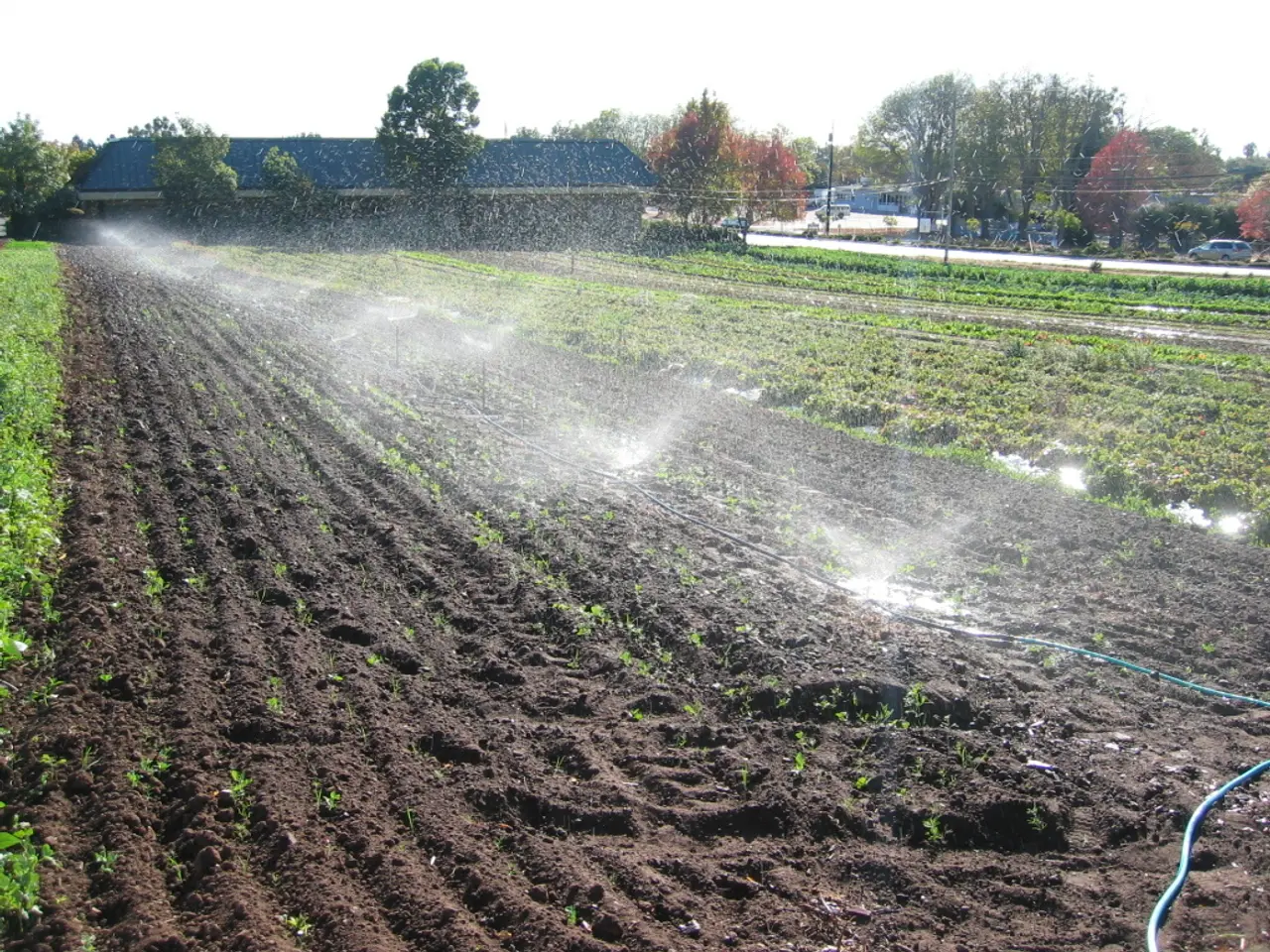Maintaining irrigation infrastructure: ways to prevent malfunctions
A well-maintained irrigation system is crucial for conserving water, protecting landscapes, and reducing operational costs over the long term. Here are some key practices for routine and extraordinary maintenance to prevent breakdowns and ensure efficient water delivery.
Routine Maintenance Practices
Regular inspections, cleaning, and adjustments are essential for maintaining an efficient irrigation system. Periodically check valves, sprinkler heads, pipes, and electrical connections for wear, leaks, corrosion, clogs, or misalignment to address issues early. Remove dirt, sediment, and mineral buildup from sprinkler heads and valves to prevent clogging and maintain flow efficiency.
Ensure system pressure is within the optimal range using pressure regulators or booster pumps to avoid misting or damage caused by too high or low pressure. Inspect wiring and controller connections, replacing corroded wires to maintain steady power and prevent controller malfunctions. Optimize the watering schedule by watering plants deep and infrequently during early morning or late evening hours to reduce evaporation and disease risk, targeting root zones rather than leaves.
Seasonal maintenance is also important. Perform spring system startup inspections and fall winterization to prepare the system for off-season conditions, reducing the risk of freeze damage.
Extraordinary or Preventive Maintenance Actions
Address valve component wear and tear, cracked pipes, damaged emitters, or broken sprinkler heads as soon as detected to prevent leaks or system failure. Schedule expert irrigation system evaluations periodically or when signs of poor performance appear (brown spots, pooling water, etc.) to identify inefficiencies and emerging problems.
For large-scale or municipal irrigation systems, maintenance software can optimize scheduling and reduce administrative costs.
Maintaining a Reliable Irrigation System
These combined practices lead to a reliable irrigation system that conserves water, protects landscapes, minimizes emergency repairs, and reduces operational costs over the long term. A clean and well-calibrated system ensures uniform water distribution, reduces waste, and provides plants with the water they need.
Avoid abnormal pressure, which can indicate leaks, obstructions, or damaged solenoids, by checking each zone and maintaining stable pressure. In winter or rural areas, pipes can be damaged by ice or animals, necessitating a complete inspection at the start of the season.
Lastly, always ensure the timer is correctly configured and use quality materials and components that can withstand environmental conditions better. Regular maintenance allows small issues like leaks, obstructions, or defective solenoids to be detected in time, preventing damage and extending the life of an irrigation system.
Pro Tip: Installing rain sensors can optimize water consumption and avoid unnecessary watering in case of rain.
By following these best practices, you can ensure your irrigation system operates efficiently, saves water, and lasts longer with quality components.
- In the realm of home-improvement, routine maintenance for irrigation systems entails regular inspections, cleaning, and adjustments of valves, sprinkler heads, pipes, and electrical connections to conserve water, protect landscapes, and minimize operational costs.
- To supplement this, incorporating news about lifestyle and home-and-garden sections can highlight the benefits of maintaining a clean and well-calibrated irrigation system, ensuring uniform water distribution, reducing waste, and providing plants with the water they need.




